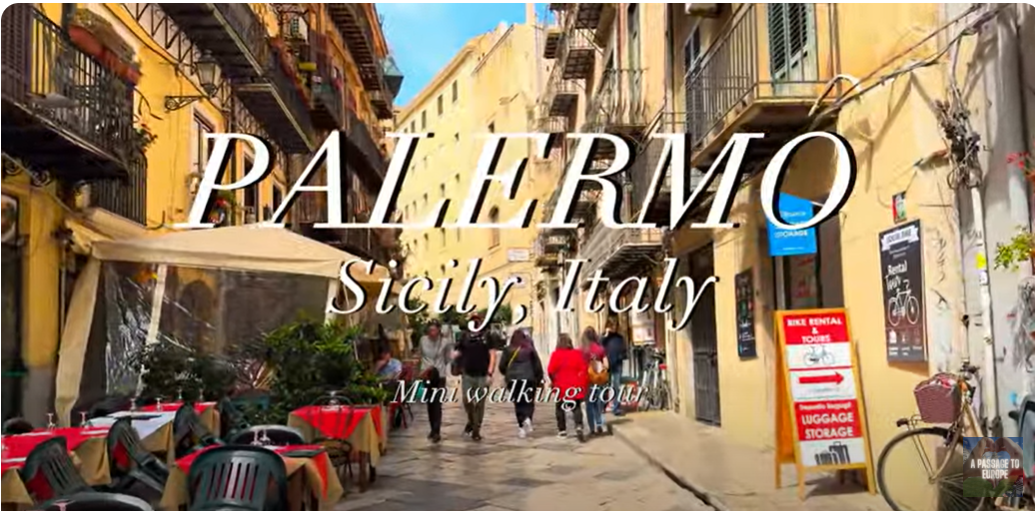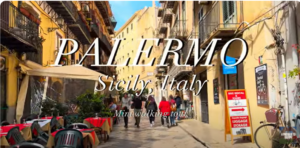
Parlermo
Välkommen till de förtrollande gatorna i Palermo, Siciliens pulserande hjärta, Italien! 🇮🇹 Gör dig redo att ge dig ut på en fängslande resa genom historia, kultur och kulinariska nöjen i en av de mest fascinerande städerna i Medelhavet.
I denna uppslukande vandringstur kommer vi att vandra genom de charmiga gränderna och livliga torgen i Palermo, och avslöja dess rika gobeläng av influenser från antika civilisationer till moderna underverk.
Elite Hotels Of Sweden
Vårt äventyr börjar i den historiska stadskärnan, där den majestätiska katedralen i Palermo står som ett bevis på stadens arkitektoniska prakt. Förundras över dess utsökta blandning av normandiska, gotiska och barockstilar, och lär dig om dess månghundraåriga historia som en symbol för Palermos religiösa och kulturella arv.
När vi slingrar oss genom de livliga marknaderna i Ballarò och Vucciria, förbered dig på att locka dina smaklökar med smakerna från det sicilianska köket. Från salta arancini till söt cannoli, dessa livliga marknader erbjuder en sensorisk fest för matälskare.
A dip in the Baroque of Casa Professa
The Arab-Norman Palermo itinerary will certainly take us to places of extraordinary beauty. But a tour of Baroque Palermo will be just as surprising!
Palermo’s most symbolic Baroque building is probably the Chiesa del Gesù, better known as Casa Professa. It stands on a rise full of dark ravines where, according to tradition, hermit saints once took refuge and where early Christian catacombs can still be found. A violent bombing raid in 1943 destroyed a large part of the prestigious monument. Restoration work has restored almost all the stucco and frescoes, restoring the church to its original appearance. The interior blends late Renaissance rigour with a new Baroque spatial style.
2 Le stanze al Genio
The name Casa Museo Stanze al Genio refers to the nearby Fontana del Genio in Palermo, at Piazza Rivoluzione. Once through the large doorway, we are quickly drawn to the stairs by the rich flooring and original frescoes of the late 18th-century building. What will appear before us is a unique collection of more than 2300 Italian majolica tiles. They are the pieces of a huge artistic puzzle from southern Italy (mainly Campania and Sicily) from the late 16th to early 20th century. The collectors, owners of the building, will take us into a world where art takes on the dimensions of a small walkable square.
. The “theatrical” Piazza Vigliena: the Quattro Canti
The most scenic urban corner of Palermo is undoubtedly represented by the Quattro Canti, the point where Via Maqueda and Via Vittorio Emanuele intersect dividing the city into four historic districts (districts).
Four buildings outline the profile of the suggestive seventeenth-century square, known as Piazza Vigliena, which every July 14 awaits the most significant stage of the exciting procession of Santa Rosalia.
Four main elements stand out on each facade: a fountain which represents one of the rivers that once crossed the city; an allegory depicting one of the seasons; the statue of one of the Spanish kings and, on top, the statue of one of the patron saints of Palermo, each placed to protect a district.
Throughout the year, at least one facade of the buildings is illuminated by the sun: this is why the Quattro Canti are called “Teatro del Sole”. The square, whose shape resembles an octagon with mussed edges, once housed public festivals and capital executions. This explains why it is also known as the “City Theater”.
A premiere at the Teatro Massimo
But also a simple guided tour will do. The Massimo is Italy’s largest opera house, the third largest in Europe after the Paris Opera House and the Vienna State Opera,and a symbol of the grandeur of the Art Nouveau period, when Palermo was so beautiful and elegant that it attracted and hosted the most sought-after European courts. Today, you can plan a visit to the city and then attend an opera, ballet or symphonic music premiere, rediscovering the atmosphere of the glorious Florio days.
UNESCO Heritage Opera dei Pupi
This is the first Italian UNESCO Heritage site to be included in the Intangible and Oral Heritage of Humanity list in 2008.
Throughout the island, you can watch performances of the Opera dei Pupi by talented puppet masters who have made this tradition a worldwide art icon. The theatre venues in Palermo, together with the Antonio Pasqualino International Puppet Museum, are a truly unique attraction.
Continue the tour on the Izi Travel audio guide.
Catacombs of the Capuchins
A place you wouldn’t go if you were dead? Everyone says so, but then it’s impossible to resist the temptation to go and see them. The Capuchin Catacombs contain 8,000 mummified bodies: from Capuchins to members of noble families, from the bourgeoisie to representatives of the clergy.
The state of preservation of the countless corpses on display makes the cemetery of the Convent of the Capuchin Friars one of the most impressive places to visit in the world. A macabre spectacle that highlights the customs and traditions of Palermo’s city society during the period between the 17th and 19th centuries. It is also home to the world’s most beautiful mummy: little Rosalia
Visits: 30








